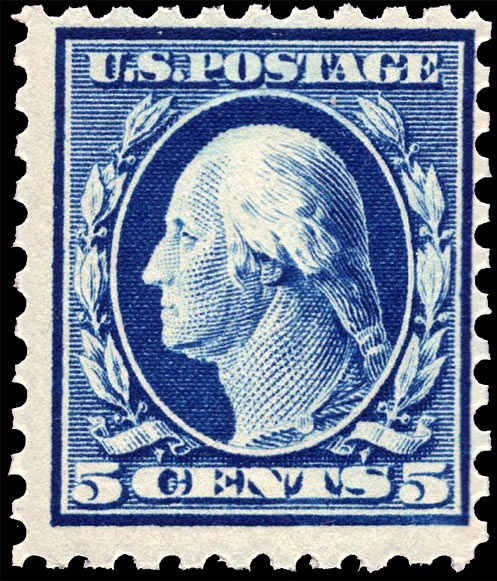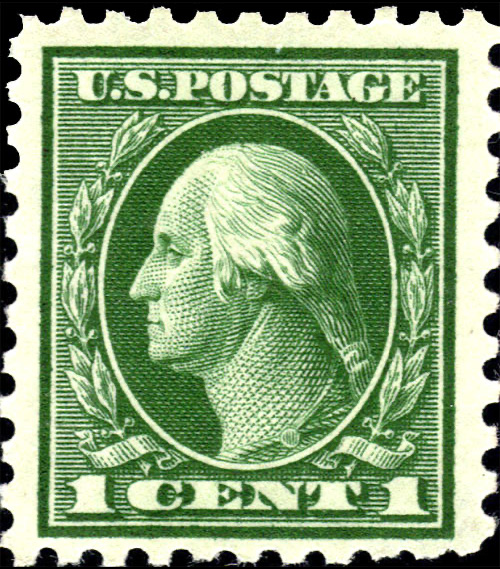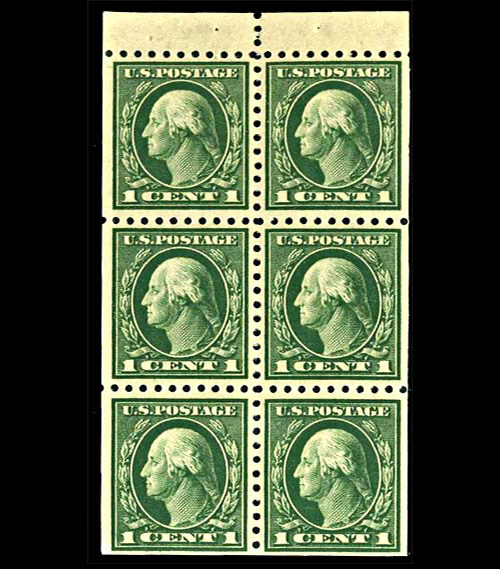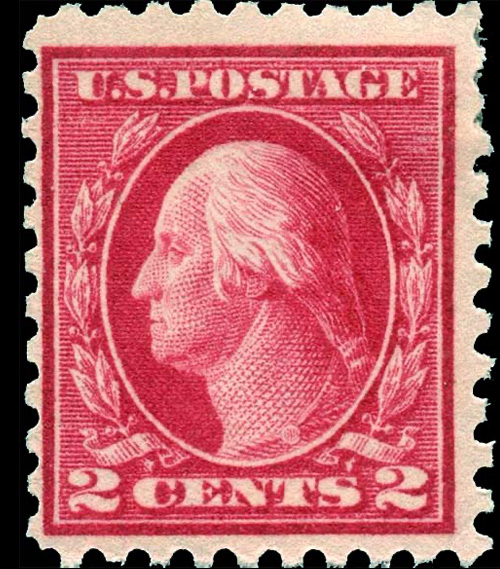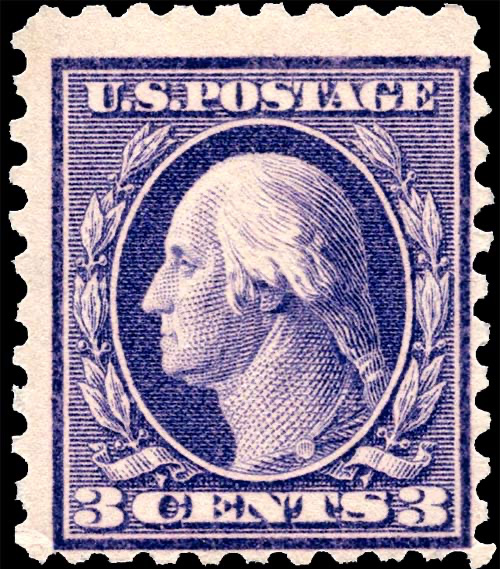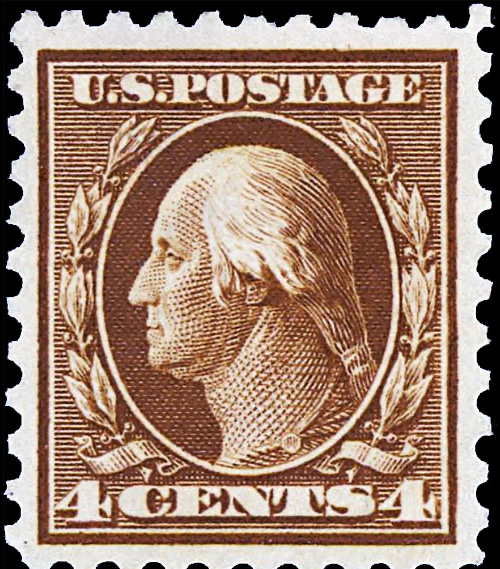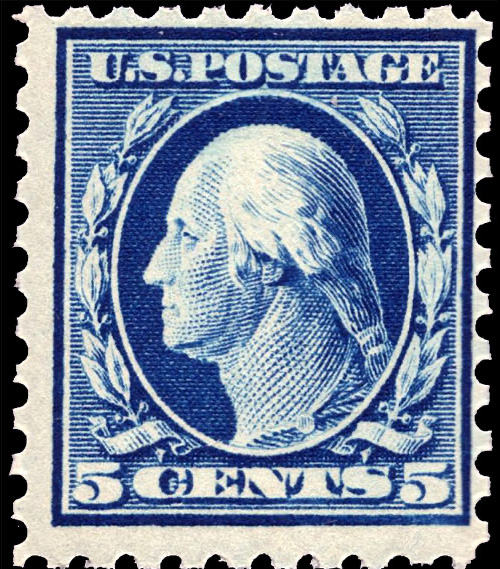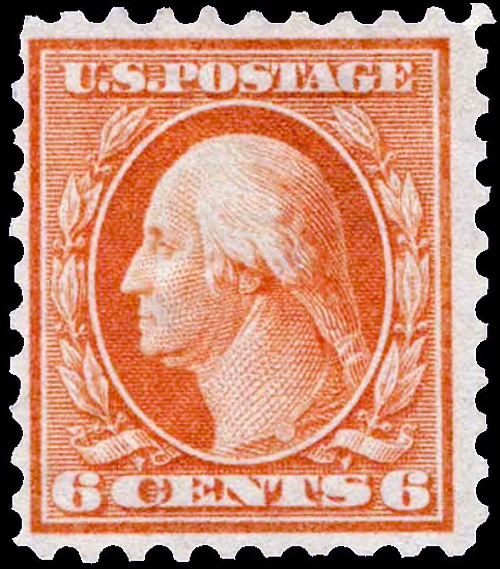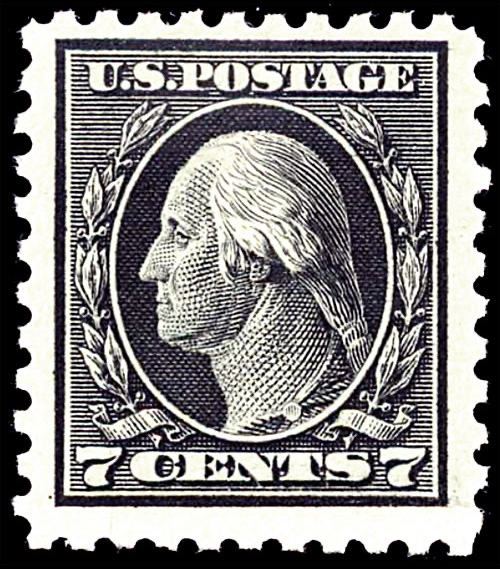Basic Info
5¢ light blue, bright blue, dark blue, indigo.
Subject: George Washington
Number issued: 359,650,000
Printing Method: Flat Plate
Perforations: 10
Watermark: Single Line USPS
Scott #: 428
Issued: September 14, 1914
Value
Used
50¢ - $1
No postmark with gum (MH)
$6 - $15
Full perfect gum, no postmark
no trace of stamp hinge mark (MNH)
$18 - $40
Plate Numbers

#428 was issued with the following plate #'s
Number Only
6733-34, 36, 39
7016-18, 21-22
7235-42
7622-23, 32-33
The Watermark
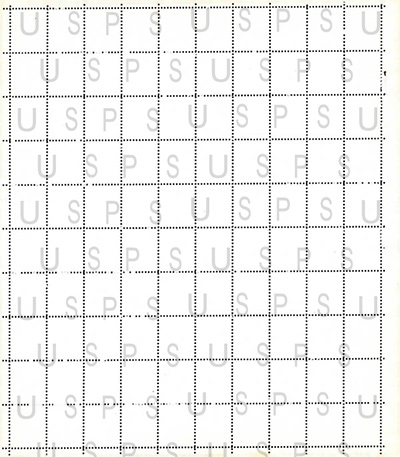
The watermark consists of single lined USPS letters. A stamp may show only part of a letter or letters
A Full Pane
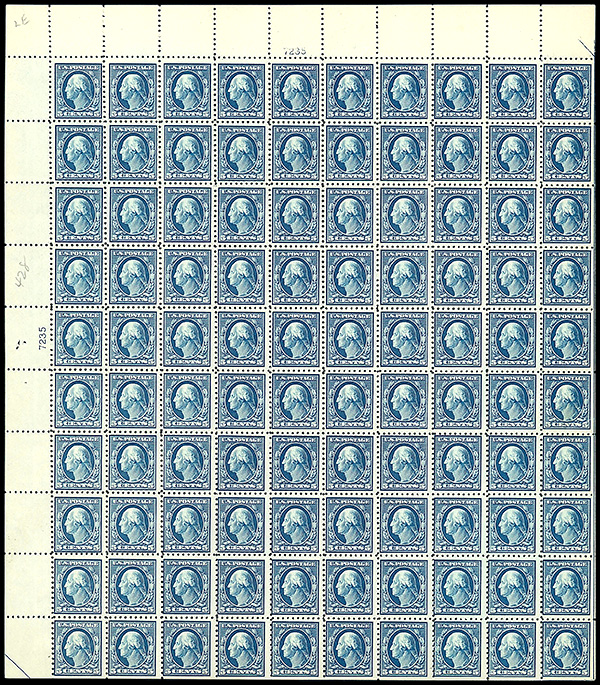
A pane of #428. there are 100 stamps to a pane and four panes to a sheet
A new perforation
To increase the strength of the perforations which had been running 12 to 2cm and found to be too brittle when handled, a reduction in the number of holes cut to each 2cm was decided upon and the 10 gauge perforation was used. This gave collectors a new variety which remained in use for over two years.
The 3 cent star plates having become obsolete before the change in perforations took place, there are no longer any spacing varieties in this denomination. All plates used had only a number.
Earliest Known Use
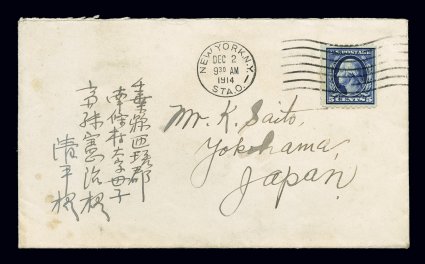
The earliest known use of #428, December 2nd 1914
Flat Plate?

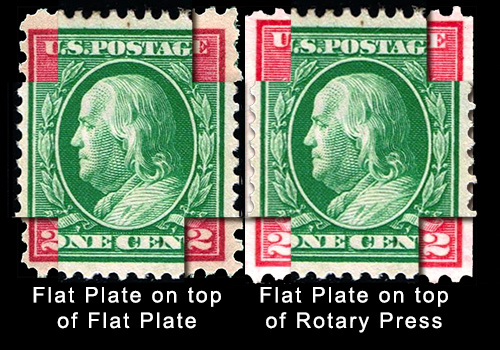
As the curved plates of the Rotary press made the stamps slightly larger it is relatively easy to discern which stamp is flat plate and which is a rotary press stamp. First select any perf Washington Franklin stamp or the first issue Washington Franklin 1 cent or 2 cent. These are the stamps with the numbers one and two spelt out, instead of numbers being displayed. I chose the latter alternative as shown in the first image above.
Then cut out squares at each corner. As shown in the second image above. Placing the stamp you wish to test under your cut out stamp you can see if the frame lines match. If, as in the last image shown above the frame lines are outside the top stamp in either the top, bottom or sides then you have a rotary stamp. If the lines are in the same place, as shown in the third image, you have a flat plate stamp.
This test works with any value stamp.
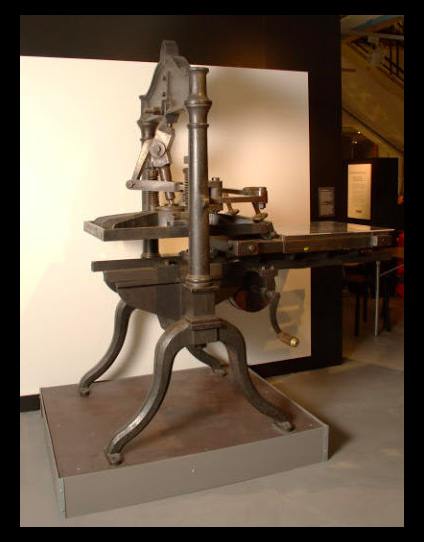
The flat plate press
Postal Scenes of 1916/17
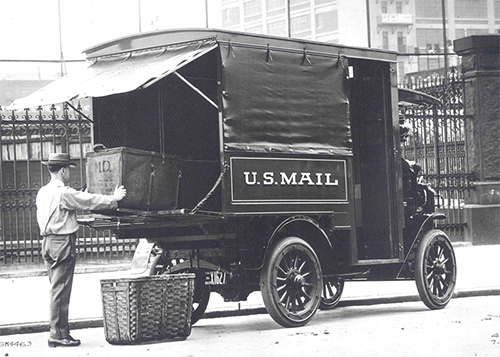
Mail truck 1916
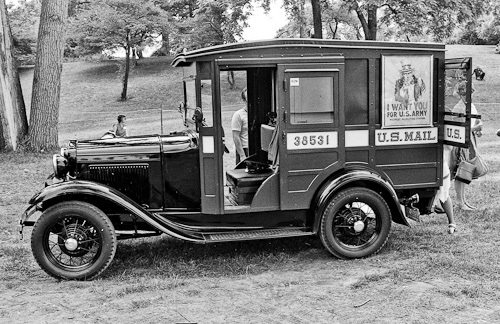
Mail truck, 1917
